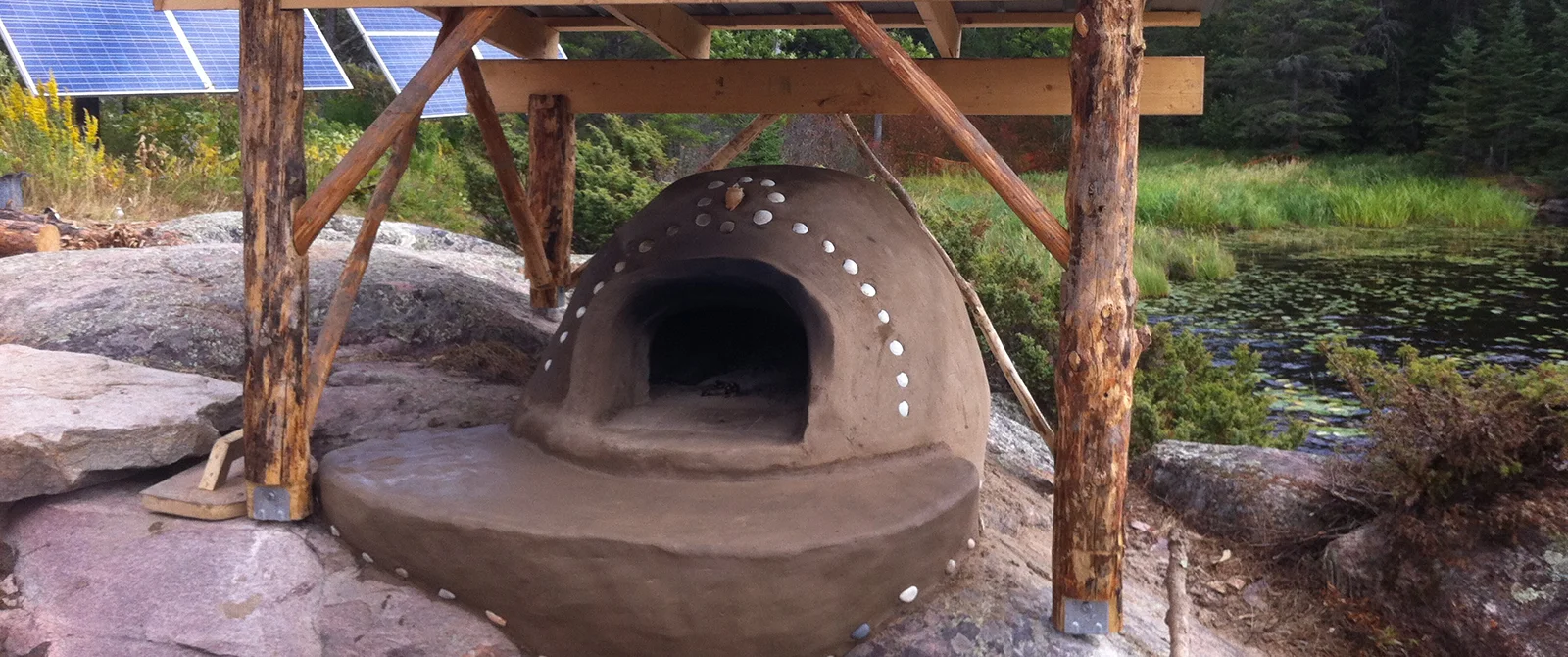Originally published in Lake of the Woods Area News, Volume 55, Number 5, Winter 2025
The built environment around us gives shape to our lives. From the four walls of our home that surrounds us to keep us safe, warm, and comfortable, to the roads that shape where we can go and how we can get there. As humans we’ve come a long way in how we build these environments. The sheer diversity of materials used and the different forms they come in have allowed us to create a wonderful array of spaces to inhabit. We’ve come a long way from living in earthen huts, and yet there is something elemental about earth as a building material. I think it has a lot to offer us in a modern context that often goes missed.
When I say earth, I mean mineral soil. That mix of sand, silt, and clay that you will find almost anywhere on the planet. This is different from “top soil” which is the layer on top, made up of mineral soil mixed with organic matter (decaying plants and animals, roots, microbes, insects).
Many of you reading may not have considered earth as a build material; I know that I sure didn’t! The first exposure I had to earth as a building material was an “earth oven” nearly 10 years ago. Since then, I’ve seen earth used in straw bale, adobe, and rammed earth homes, as a natural plaster on walls, and I’ve used earth in many of my own projects.
Using earth as a build material falls into a category known as “natural building”. Natural building is broadly defined as “construction using locally available, minimally processed, natural materials”.


There are pros and cons to working with earth. It is fireproof, UV proof, rot proof, widely available, sustainable, non-toxic and easy to work with. It does have some drawbacks, and these are likely why it has fallen out of popular use. It erodes when exposed to weather or is abraded, it is non-standardized, it can be time consuming to work with and swells/shrinks with changing weather conditions. All of these factors taken together in a modern context mean that it isn’t suitable in every situation, but it is a viable option in far more situations than many people are aware of.
I am a DIY kind of person, and for other DIY folks I think the best reasons to use earth in building projects are: sustainability, reduced costs, pleasing aesthetics, deeper connection with the earth and your projects, and, simply put, working with it is FUN!
The work that I’ve done with earth is building earth ovens and earthen plaster. There are various ways you can use earth and an important piece is getting the right mix of sand and clay depending on the kind of project you’re doing. The soil I’ve worked with is generally quite clayey, and I will use a mix of one part clay soil to three or four parts sand found nearby or purchased with a local hauling company. When structure is needed, fibre can be added in the form of straw, cattail fuzz, long stranded wood chips, or even pet fur. Fibre acts like rebar in the earth.
So how does one actually build with earth? The details of that are beyond the scope of this article, but the simplest answer is to find guidance through books and online, and do some trial and error. I used a book titled Build Your Own Earth Oven by Kiko Denzer, which did a very thorough, concise, and engaging job of teaching the basics of working with earth. When building with earth you have to wet it to the consistency of mud. There’s a child-like sense of joy in getting to create with mud, and I encourage anyone interested to pick a simple project and just have fun with the material while not being attached to the outcome.
A few years ago, as a Mother’s Day gift, my family and I earth-plastered an exterior wall of my parent’s house that was under the roof of their screened-in porch. We nailed expanded metal lath to the wall, and I mixed, with my feet on a tarp, a big pile of wet clay, sand, water, and cattail fuzz. We all spent an afternoon trowelling it up onto the wall. It was a fun family experience and made a beautiful finish on the wall in the porch.
The built environment around us shapes our lives. I dream of a life and of a future that is more connected with the Earth. Incorporating earth into my life feels like a great way to do that. Maybe you will want to as well. Feel free to give me a call if you would like to chat more about this topic: 807-407-4341.


